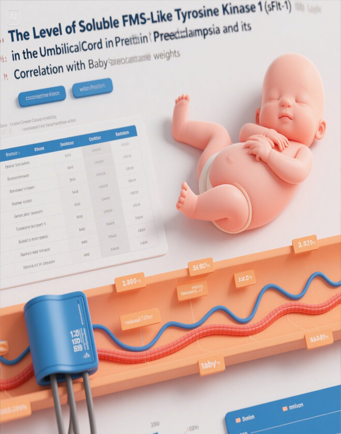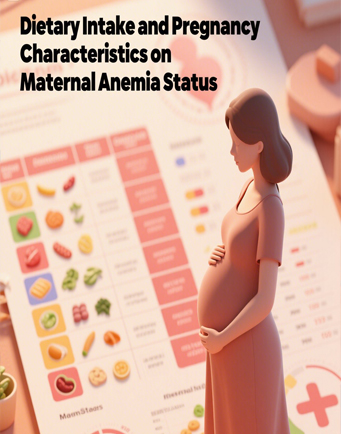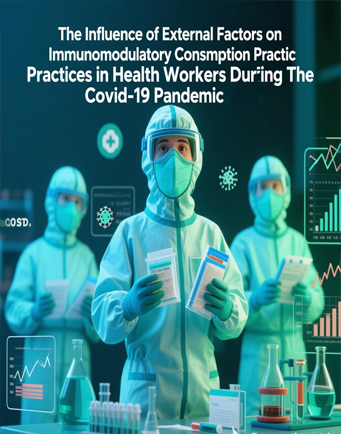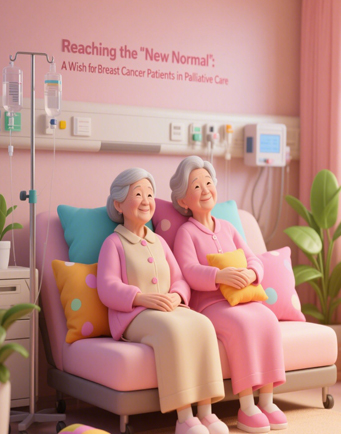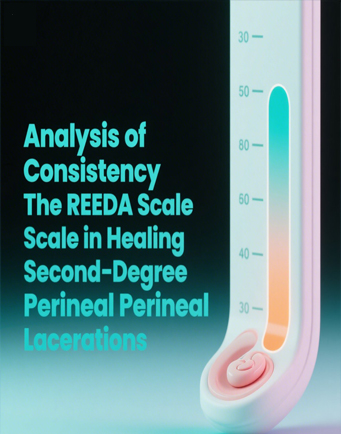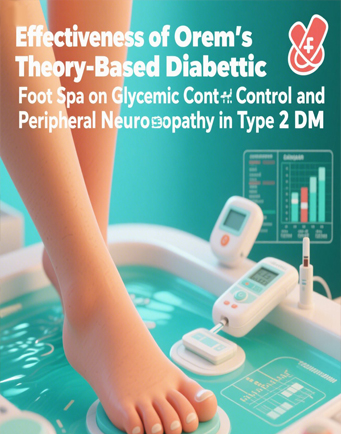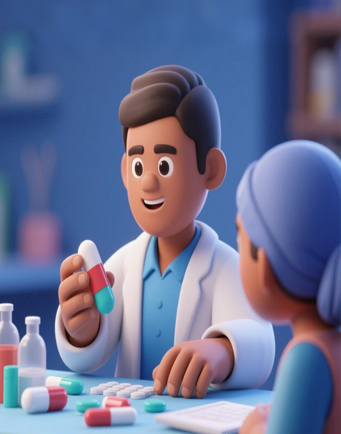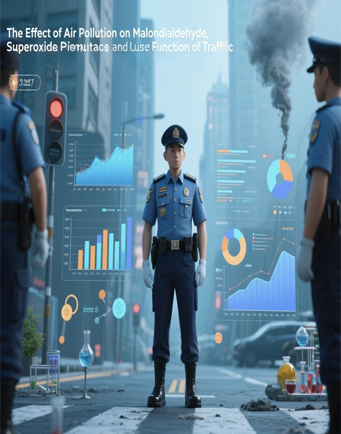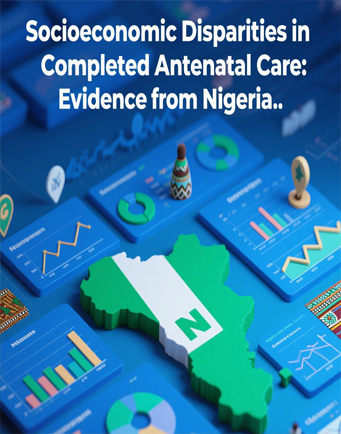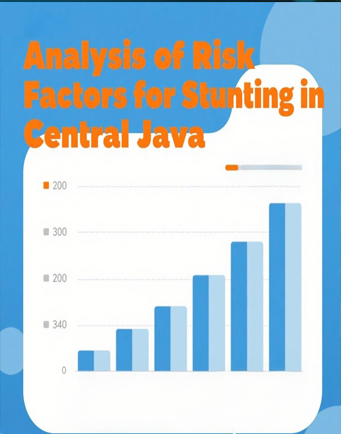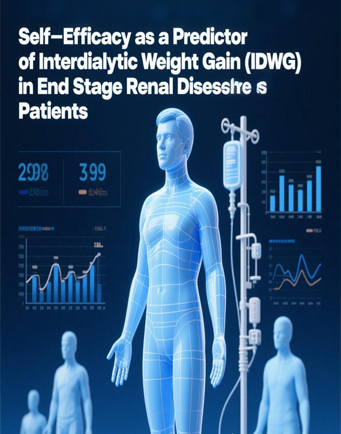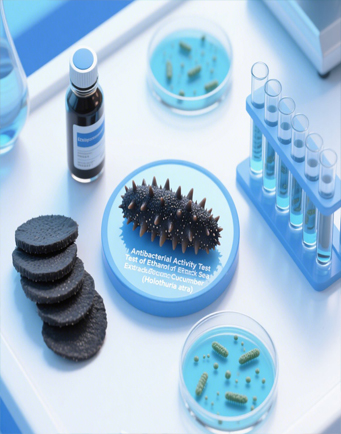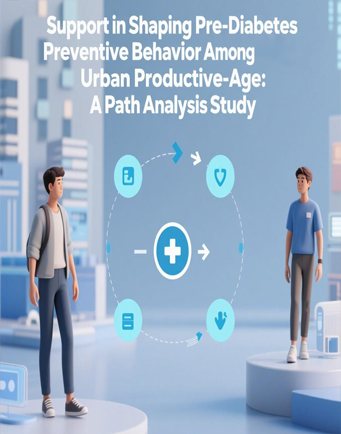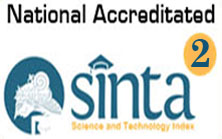Mercury Exposure in Pregnant Women Using Whitening Cosmetics and Potential Health Risks
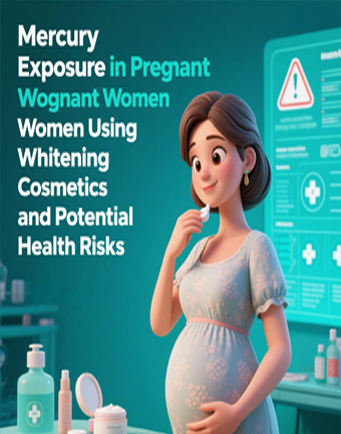
Downloads
Recently, women are increasingly using whitening cosmetics to beautify their skin. However, they are not aware that whitening cosmetics contain mercury. Several studies have reported high levels of mercury in skin whitening creams. Women, especially pregnant and lactating mothers, who use these creams are at risk of mercury poisoning because long-term exposure can cause permanent nerve damage, kidney disorders, fertility problems, and congenital disabilities. This study aimed to analyze mercury exposure in pregnant women using whitening cosmetics and potential health risks. This research method is an observational analytic, cross-sectional design. The instrument is a questionnaire. Sampling was carried out at Khadijah 1 Hospital, Makassar City. The sample in this study consisted of 20 pregnant women who used whitening cosmetics, 20 who did not use whitening cosmetics and 20 samples of whitening cosmetics used by pregnant women. The cosmetic samples analyzed were the concentration of mercury contained in the cosmetics. Mercury testing was conducted at The Indonesian Institute for Public Health Laboratories, Makassar (BBLK). Data analysis using SPSS software. This result study showed that 20 cosmetics used by pregnant women were detected with mercury. The highest mercury concentration was 86.1 ppm, and the lowest was 3.5 ppm. Those registered with the Food and Drug Administration (BPOM) were 11 cosmetics, and 9 were not registered with BPOM. Statistical analysis shows a correlation between the frequency, duration, and volume of cosmetic use and mercury concentration in pregnant women's hair, namely 0.008, 0.017, and 0.032, respectively. The potential health risks experienced by pregnant women who use cosmetic whitening creams are anemia of as much as 55%, the fetus not actively moving as much as 15%, and the weight of the fetus not increasing as much as 30%. The statistical analysis of the relationship between mercury exposure and potential health risk experienced by pregnant women, with a p-value of 0.039 < p-value of 0.05. The use of whitening cosmetics in pregnant women can have an impact on the fetus in the womb. Therefore, pregnant women should not use cosmetics containing mercury during pregnancy and should increase their knowledge about the contents of cosmetics.
Abas, N. I., Palli, A. H., & Ngabito, Y. (2024). Description of Pharmacy Student Behavior of Bina Mandiri University Gorontalo Regarding The Circulation of Illegal Cosmetic Products in Gorontalo City. Journal of Health, Technology and Science (JHTS), 5(1), 47–56. Retrieved from: https://journals.ubmg.ac.id/index.php/JHTS/article/view/1292
Abbas, H. H., Sakakibara, M., Sera, K., Nurgahayu, & Andayanie, E. (2020). Mercury exposure and health problems of the students using skin-lightening cosmetic products in Makassar, South Sulawesi, Indonesia. Cosmetics, 7(3), 58. https://doi.org/10.3390/COSMETICS7030058
Abbas, H. H., & Sakakibara, M. (2019). Problem of Illegal Cosmetics Containing Mercury In Indonesia. Internasional Conference on Health Science in Develpoping Country (I-CHEDEPY) Universitas Muslim Indonesia, 1-9.
Abera, B. D., & Adimas, M. A. (2024). Health benefits and health risks of contaminated fish consumption: Current research outputs, research approaches, and perspectives. Heliyon, 10(13), e33905. https://doi.org/10.1016/j.heliyon.2024.e33905
Ahmed, M., Ahmad, M., Sohail, A., Sanaullah, M., Saeed, A., Qamar, S., ... & Khalid, K. (2024). Multivariate Statistical Analysis of Cosmetics Due to Potentially Toxic/Heavy Metal (loid) Contamination: Source Identification for Sustainability and Human Health Risk Assessment. Sustainability, 16(14), 6127. https://doi.org/10.3390/su16146127
Arora, N., & Amin, S. (2024). Analyzing Global Interest in Skin Whitening by Geographic Region. Baylor University Medical Center Proceedings, 37(3), 505–507. https://doi.org/10.1080/08998280.2024.2328448
Balogun, M.A, Money-Irubor, M. O., & Umukoro, N. O. (2024). Heavy Metals Concentration in Body Creams Commonly Used in Delta State Tertiary Institutions and Their Implications For Human Health. 12(2), 24–32.
Block, L. S. (2004). The toxicology of mercury. The New England Journal of Medicine, 350(9), 945-947. https://doi.org/10.1056/NEJM200402263500919
BPOM RI. (2019). Peraturan Badan Pengawas Obat dan Makanan Nomor 23 Tahun 2019 Tentang Persyaratan Teknis Bahan Kosmetik. Jakarta: BPOM RI.
BPOM RI. (2022). Daftar Kosmetik yang Dinyatakan Mengandung Bahan Dilarang atau Berbahaya di Peredaran - Direktorat Standardisasi Obat Tradisional, Suplemen Kesehatan dan Kosmetik. Jakarta: BPOM RI.
Chan, T. Y. K. (2011). Inorganic mercury poisoning is associated with skin-lightening cosmetic products. Clinical Toxicology, 49(10), 886–891. https://doi.org/10.3109/15563650.2011.626425
Chan, T. Y. K., Chan, A. P. L., & Tang, H. L. (2020). Nephrotic syndrome caused by exposures to skin-lightening cosmetic products containing inorganic mercury. Clinical Toxicology, 58(1), 9–15. https://doi.org/10.1080/15563650.2019.1639724
Clarkson, T. W., & Magos, L. (2006). The Toxicology of Mercury and Its Chemical Compounds. Critical Reviews in Toxicology, 36(8), 609–662. https://doi.org/10.1080/10408440600845619
Dack, K., Huang, P., Taylor, C. M., Rai, D., & Lewis, S. J. (2024). Environmental and genetic predictors of whole blood mercury and selenium concentrations in pregnant women in a UK birth cohort. Environmental Advances, 15(December 2023), 100469. https://doi.org/10.1016/j.envadv.2023.100469
Dutta, S., & Ruden, D. M. (2024). Heavy Metals in Umbilical Cord Blood: Effects on Epigenetics and Child Development. Cells, 13(21), 1–34. https://doi.org/10.3390/cells13211775
Geelen, J. A. G., Dormans, J. A. M. A., & Verhoef, A. (1990). The early effects of methylmercury on the developing rat brain. Acta Neuropathologica, 80, 432-438. https://doi.org/10.1007/BF00307699
Geier, D. A., & Geier, M. R. (2024). Estimated mercury vapor exposure from amalgams among American pregnant women. Human and Experimental Toxicology, 43, 1–9. https://doi.org/10.1177/09603271241231945
Grandjean, P. (1997). Cognitive deficit in 7-year-old children with prenatal exposure to methylmercury. Neurotoxicology and Teratology, 19(6), 417–428. https://doi.org/10.1016/S0892-0362(97)00097-4
Hamann, C. R., Boonchai, W., Wen, L., Sakanashi, E. N., Chu, C. Y., Hamann, K., Hamann, C. P., Sinniah, K., & Hamann, D. (2014). Spectrometric analysis of mercury content in 549 skin-lightening products: Is mercury toxicity a hidden global health hazard? Journal of the American Academy of Dermatology, 70(2), 281-287.e3. https://doi.org/10.1016/j.jaad.2013.09.050
Jensen, T. K., Grandjean, P., Jørgensen, E. B., White, R. F., Debes, F., & Weihe, P. (2005). Effects of breast feeding on neuropsychological development in a community with methylmercury exposure from seafood. Journal of Exposure Analysis and Environmental Epidemiology, 15(5), 423–430. https://doi.org/10.1038/sj.jea.7500420
Ji, H., Chen, Y., Liu, D., Zhou, T., & Tang, Y. (2025). Diverse clinical manifestations and prognosis in a couple’s mercury poisoning caused by skin-lightening creams: two case reports and literature review. Frontiers in Medicine, 11, 1511493. https://doi.org/10.3389/fmed.2024.1511493
Kicińska, A., & Kowalczyk, M. (2025). Health risks from heavy metals in cosmetic products available in the online consumer market. Scientific Reports, 15(1), 1–13. https://doi.org/10.1038/s41598-024-83477-2
Lee, D. A., Lopez-Alberola, R., & Bhattacharjee, M. (2003). Childhood autism: A circuit syndrome? Neurologist, 9(2), 99–109. https://doi.org/10.1097/01.nrl.0000051441.03160.e0
Liu, J., Ruan, F., Cao, S., Li, Y., Xu, S., & Xia, W. (2022). Associations between prenatal multiple metal exposure and preterm birth: Comparison of four statistical models. Chemosphere, 289, 133015. https://doi.org/10.1016/j.chemosphere.2021.133015
Mercan, S., Zengin, S., Kilic, M. D., & Yayla, M. (2024). Theoretical Health Risk Assessment Based on Potentially Toxic Element Profiling of Cosmetic Products in Istanbul Street Bazaars. Biological Trace Element Research, 202(4), 1816–1828. https://doi.org/10.1007/s12011-023-03791-0
Miller, C., Mason, M., Davidson, T., Martin, S., Givans, T., Davis-Gooden, C., ... & Andrew, P. (2024). A Quantitative Study to Understand the Perception toward Hazardous Chemicals in the Jamaican Beauty Industry. Young Scientist- Tomorro w’s Science Begins Today, 8(2), 9-27.
Mohammed, T., Rambocas, N., Basdeo, S., & Kissoon, Y. (2024). Evaluation of mercury in skin lightening creams commonly used in Trinidad and Tobago and their associated health risk. The European Research Journal, 10(3), 276–285. https://doi.org/10.18621/eurj.1314329
Munir, N., Jahangeer, M., Bouyahya, A., El Omari, N., Ghchime, R., Balahbib, A., ... & Shariati, M. A. (2022). Heavy metal contamination of natural foods is a serious health issue: A review. Sustainability, 14(1), 161. https://doi.org/10.3390/su14010161
Myers, G. J., & Davidson, P. W. (1998). Prenatal methylmercury exposure and children: Neurologic, developmental, and behavioral research. Environmental Health Perspectives, 106(3), 841–847. https://doi.org/10.1289/ehp.98106841
Offor, U. I., Nwaru, P., & Offiah, C. (2024). Challenges of the use of artificial intelligence on academic performance of undergraduate students in public universities in Anambra State. African Journal of Educational Management, Teaching and Entrepreneurship Studies, 12(2), 176-190. Retrieved from: https://www.ajemates.org/index.php/ajemates/article/view/483
Peregrino, C. P., Moreno, M. V., Miranda, S. V., Rubio, A. D., & Leal, L. O. (2011). Mercury levels in locally manufactured Mexican skin-lightening creams. International Journal of Environmental Research and Public Health, 8(6), 2516–2523. https://doi.org/10.3390/ijerph8062516
Rice, D., & Barone, S. (2000). Critical periods of vulnerability for the developing nervous system: Evidence from humans and animal models. Environmental Health Perspectives, 108(SUPPL. 3), 511–533. https://doi.org/10.1289/ehp.00108s3511
Rumiantseva, O., Komov, V., Kutuzov, M., Zaroual, H., Mizina, K., Belova, M., ... & Vilkova, D. (2024). Hair Mercury Levels in Pregnant Women: Fish Consumption as a Determinant of Exposure. Toxics, 12(5), 366. https://doi.org/10.3390/toxics12050366
Shih, Y. H., Chen, H. Y., Christensen, K., Handler, A., Turyk, M. E., & Argos, M. (2021). Prenatal Exposure to Multiple Metals and Birth Outcomes: An observational Study within the National Children’s Study cohort. Environment International, 147, 106373. https://doi.org/10.1016/j.envint.2020.106373
Sulami, N., Aliyati, N. N., & Fitri, E. (2024). Use of Cosmetics in Pregnant Women During Pregnancy. 15(04), 1349–1355. https://doi.org/10.54209/eduhealth.v15i04
Tang, H. L., Chu, K. H., Mak, Y. F., Lee, W., Cheuk, A., Yim, K. F., Fung, K. S., Chan, H. W., & Tong, K. L. (2006). Minimal change disease following exposure to mercury-containing skin lightening cream. Hong Kong Medical Journal, 12(4), 316–318.
Taylor, C. M., Golding, J., & Emond, A. M. (2015). Adverse effects of maternal lead levels on birth outcomes in the ALSPAC study: A prospective birth cohort study. BJOG: An International Journal of Obstetrics and Gynaecology, 122(3), 322–328. https://doi.org/10.1111/1471-0528.12756
Tlacuilo-Parra, A., Guevara-Guti[eacute]rrez, E., & Luna-Encinas, J. A. (2001). Percutaneous mercury poisoning with a beauty cream in Mexico. Journal of the American Academy of Dermatology, 45(6), 0966–0967. https://doi.org/10.1067/mjd.2001.117243
UNEP. (2024). Eliminating Mercury Skin Lightening Products. UNEP
Vigeh, M., Nishioka, E., Ohtani, K., Omori, Y., Matsukawa, T., Koda, S., & Yokoyama, K. (2018). Prenatal mercury exposure and birth weight. Reproductive Toxicology, 76, 78-83. https://doi.org/10.1016/j.reprotox.2018.01.002
Wang, M., Zhang, L., Zheng, L., Shi, J., Gao, H., He, C., & Song, L. (2024). Research Progress on Evaluating the Effectiveness and Safety of Transdermal Absorption of Cosmetics. Cosmetics, 11(6), 217. https://doi.org/10.3390/cosmetics11060217
Wu, Y. S., Osman, A. I., Hosny, M., Elgarahy, A. M., Eltaweil, A. S., Rooney, D. W., ... & Yap, P. S. (2024). The toxicity of mercury and its chemical compounds: molecular mechanisms and environmental and human health implications: a comprehensive review. Acs Omega, 9(5), 5100-5126. https://doi.org/10.1021/acsomega.3c07047
Copyright (c) 2025 JURNAL INFO KESEHATAN

This work is licensed under a Creative Commons Attribution-NonCommercial-ShareAlike 4.0 International License.
Copyright notice
Ownership of copyright
The copyright in this website and the material on this website (including without limitation the text, computer code, artwork, photographs, images, music, audio material, video material and audio-visual material on this website) is owned by JURNAL INFO KESEHATAN and its licensors.
Copyright license
JURNAL INFO KESEHATAN grants to you a worldwide non-exclusive royalty-free revocable license to:
- view this website and the material on this website on a computer or mobile device via a web browser;
- copy and store this website and the material on this website in your web browser cache memory; and
- print pages from this website for your use.
- All articles published by JURNAL INFO KESEHATAN are licensed under the Creative Commons Attribution 4.0 International License. This permits anyone to copy, redistribute, remix, transmit and adapt the work provided the original work and source is appropriately cited.
JURNAL INFO KESEHATAN does not grant you any other rights in relation to this website or the material on this website. In other words, all other rights are reserved.
For the avoidance of doubt, you must not adapt, edit, change, transform, publish, republish, distribute, redistribute, broadcast, rebroadcast or show or play in public this website or the material on this website (in any form or media) without appropriately and conspicuously citing the original work and source or JURNAL INFO KESEHATAN prior written permission.
Permissions
You may request permission to use the copyright materials on this website by writing to jurnalinfokesehatan@gmail.com.
Enforcement of copyright
JURNAL INFO KESEHATAN takes the protection of its copyright very seriously.
If JURNAL INFO KESEHATAN discovers that you have used its copyright materials in contravention of the license above, JURNAL INFO KESEHATAN may bring legal proceedings against you seeking monetary damages and an injunction to stop you using those materials. You could also be ordered to pay legal costs.
If you become aware of any use of JURNAL INFO KESEHATAN copyright materials that contravenes or may contravene the license above, please report this by email to jurnalinfokesehatan@gmail.com
Infringing material
If you become aware of any material on the website that you believe infringes your or any other person's copyright, please report this by email to jurnalinfokesehatan@gmail.com.


